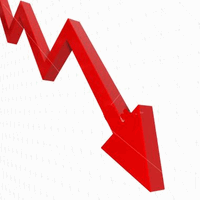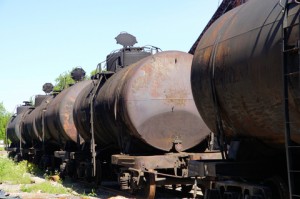Wishing you a safe and happy Independence Day!
Bakken Applauds Recent Frack Decision
Federal Court: Frack Rules Unlawful
Bakken Shale operators and industry officials applaud the recent federal court ruling that declared the fracking rules unlawful.
Related: New Fracking Rules for Public Lands
On Tuesday, U.S. District Judge Scott Skavdahl struck down the Obama administration’s attempt to regulate hydraulic fracturing on federal lands.
“Skaydahl said, “Congress has not delegated to the Department of Interior the authority to regulate hydraulic fracturing. The BLM’s effort to do so through the Tracking Rule is in excess of its statutory authority and contrary to law.”
After a four-year investigation and more than 1.5 million public comments, the Bureau of Land Management (BLM) issued new rules to regulate hydraulic oil and gas fracturing on public lands in March 2015. Industry groups quickly fired back and combined their challenges with state lawsuits to form a massive case that was heard in Judge Scott Skavdahl’s court in July.
The parties claimed the BLM exceeded their authority that new fracking rules aren’t necessary because the EPA has already granted authority to the states to monitor and protect underground water sources. Skavdahl ultimately ruled that permitting of oil and gas wells on federal land will proceed under current regulations for at least another month. Tuesday's ruling made that order final.
Oil industry officials and operators in North Dakota were among dozens who opposed the rules, arguing that the state.
“North Dakota has adopted sensible fracking regulations that work, because Congress intended the states to regulate fracking,” Attorney General Wayne Stenehjem said in a news release. ”
Alison Ritter, spokeswoman for the Department of Mineral Resources confirmed that the majority of minerals developed in North Dakota are privately or state-owned. Since roughly 30% of Bakken oil development contains some percentage of federal minerals, the BLM rule would have had a major effect on the state’s oil development.
North Dakota Oil Output Plunges 50%
Bakken Output Loses 50%
The North Dakota Department of Mineral Resources (DMR) reported last week that the state's oil output dropped more than 50% in April.
Related: Has the Bakken Peaked?
During the month of April, North Dakota pumped 1,041,007 barrels of oil per day (bpd), 70,414 bpd less than March, according to the North Dakota Department of Mineral Resources (DMR).
Low crude prices and bad weather are being blamed on the record drop in production as producers are were forced to cut back the drilling and fracking of new wells.
“Roughly half of the calendar days of the month, the wind was 36 miles an hour or higher, sustained winds and no capability to frack wells,” Helms said. “This is an abnormally high production drop.”
Currently, There are only 28 drilling rigs in the state compared to 77 one year ago. Other important stats for North Dakota include:
- 1,590 inactive wells during April (up from 67 in March)
- Zero drilling rigs operating in Williams County, home to Williston
- 66 drilling permits were issued in April and 42 in May
- Natural gas production fell from 1.7 million cubic feet per day (cf/d) in March to 1.6 million cf/d per day in April
Continental Resources to Start Fracking Again
Bakken super-producer, Continental Resources, announced that crude prices are finally within a good range for them to move forward with well completions.
Related: Continental Sidelines Bakken Rigs
Founder and CEO Harold Hamm told Bloomberg this week that new drilling in the Bakken won't take place until crude prices pass the $60 before mark. But encouraged by the recent increases, the company will move forward to complete their backlog of wells that still need to be fracked.
In late 2015, Hamm announced that Continental would join other producers to sideline their rigs in the Bakken. There are currently 24 running rigs in the Bakken Three Forks region, down from 54 in December. These drilled but uncompleted wells (DUC) have remained dormant as Hamm and others waited out the prices.
“Peter Pulikkan of Bloomberg referred to Lynn Hems data when he said “Most Bakken shale drillers will start completiing their backlogs of unfinished wells when crude reaches $55-$60 range.””
According to North Dakota's energy agency, at the end of 2015 there were 4290 DUCS in the U.S. and Continental had 945 of them. .
Continental Resources reduced their 2016 capital spending to just $920 million, down from $2.7 billion last year. They predict this large cut will lead to production of around 205,000 barrels to 215,000 barrels of oil equivalents per day in 2016, down from 221,700 boe per day last year.
Derailed Bakken Oil Car Met Regulations
A train carrying Bakken crude that derailed earlier this month, was following North Dakota regulations.
Related: Crude by Rail Under Attack
On June 3rd, 11 cars of a Union Pacific train jumped the tracks near the small town of Mosier Oregon, sparking a fire and releasing oil near the Columbia River. Federal Railroad Administration officials are now saying that the oil on the train met North Dakota’s oil conditioning standards.
The North Dakota Department of Mineral Resources requires that companies remove the most volatile gases from their crude before transport, limiting the vapor pressure to 13.7 pounds per square inch. The oil on the most recent crash recent had a vapor pressure of 9.2 pounds psi.
Bakken oil is produced at a high quality that makes it easier to refine into commercial products and makes it easier to ignite. Light oil production growth in the Bakken isn’t something the industry has never handled before, but the Bakken boom is bigger than anyone expected. As a result of lack of pipelines and additional infrastructure, nearly 70% of all Bakken crude is transported by rail.
Reports have crude by rail transport up 1700% over the last five years and accidents at a near-tenfold rise since 2008. With oil production currently at all time highs many fear that the number of accidents will increase and add to recent incidents:
In 2015, the NTSB outlined its findings from their study of recent train derailment accidents and concluded that the current fleet of DOT-111 tank cars rupture too quickly and result in spillage and ignition. The agency also found that performance of the industry’s enhanced CPC-1232 rail car is unsatisfactory. Based on their study, the NTSB gave the following recommendations that would require:
- All new and existing tank cars used to transport all Class 3 flammable liquids be equipped with thermal protection systems that meet or exceed the thermal performance standards
- All new and existing tank cars used to transport all Class 3 flammable liquids be equipped with appropriately sized pressure relief devices that allow the release of pressure under fire conditions and that minimizes the likelihood of energetic thermal ruptures
- An aggressive, intermediate progress milestone schedule, such as a 20 percent yearly completion metric over a 5-year implementation period, for the replacement or retrofitting of legacy DOT-111 and CPC-1232 tank cars to appropriate tank car performance standards
- Establishment of a publicly available reporting mechanism that reports at least annually




